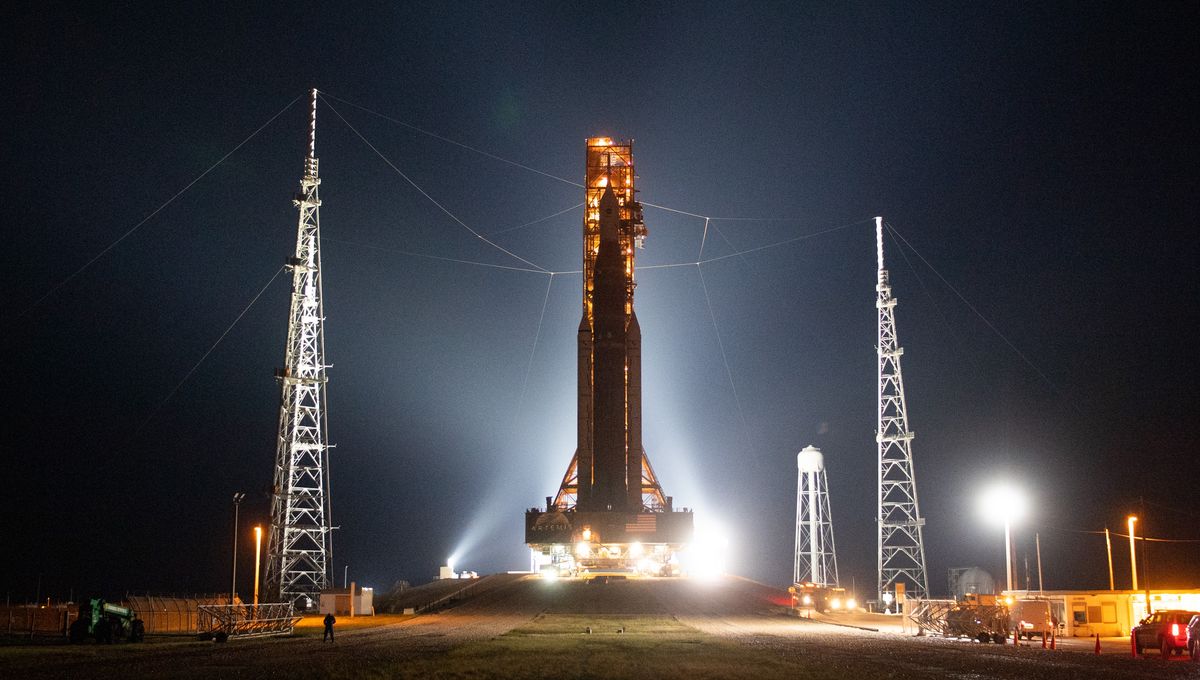
With less than a week to go, Artemis I is officially go for launch. NASA’s new Moon program begins in earnest on Monday, August 29 when the massive Space Launch System (SLS) and the Orion Spacecraft take to the skies in their first-ever flight. NASA has confirmed the launch window, so here’s how you can watch this moment in space launch history.
“We are go for launch and it’s absolutely outstanding. This day has been a long time coming,” NASA Associate Administrator Bob Cabana said during a press conference yesterday, confirming the rocket’s hardware has passed the readiness review.
Up to 200,000 people are expected to flock to Florida’s “space coast” to witness the launch of the most powerful rocket ever built from the Kennedy Space Center, including a slew of celebtities that will feature in NASA’s live broadcast, including Chris Evans, Keke Palmer, and Jack Black.
More powerful than the Saturn V rocket that took the Apollo missions to the Moon and back, SLS will attempt to deliver the uncrewed Orion capsule to space, where it will make a flyby of the Moon and return to Earth after its 42-day mission. This new technology needs to demonstrate it is foolproof as it will one day take humans to the Moon. This means Orion’s heat shield will need to stand up to reentry through Earth’s atmopshere.
“I want to put this in perspective. This is a test flight all right and it’s not without risk,” Cabana said. “We have analyzed the risk as best we can and we’ve mitigated also as best we can but we are stressing Orion beyond what it was actually designed for in preparation for sending it to the Moon with a crew and we want to make sure that it works absolutely perfectly when we do that and that we understand all the risks. We’re going to learn a lot from this test flight.”
Artemis I will see the Orion spacecraft spending 42 days in space, including six days in orbit around the Moon. The furthest it will reach from Earth is 450,000 kilometers (about 280,000 miles) and it will return with splashdown in the Pacific expected for October 10.
If everything goes according to plan, the next mission Artemis II will launch in May 2024 and it will be followed by the crewed Artemis III in late 2025.
How to watch Artemis I launch live
If you are not one of the thousands traveling to Cape Canaveral next week, don’t worry, you can watch SLS launch from the historic launchpad 39B (Apollo and Skylab both launched from here) live where ever you are in the world.
The two-hour launch window opens at 8.33 am ET on August 29 and you can watch the live stream on our Facebook page right here. You can also watch it live on NASA TV, on its website and multiple social media platforms.
Source Link: Artemis I Is Officially Go For Launch. Here’s How To Watch It Live Next Week